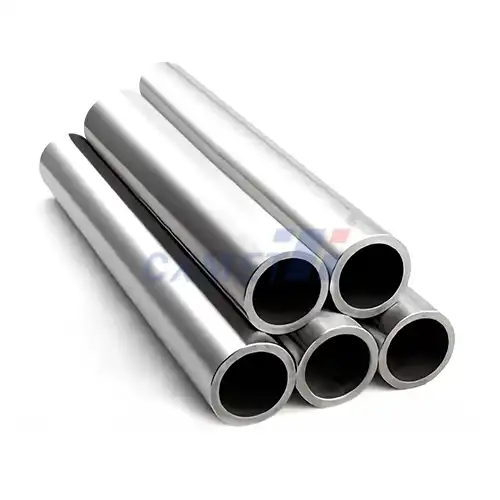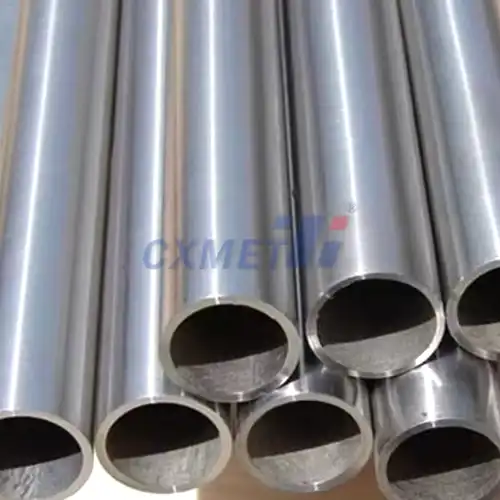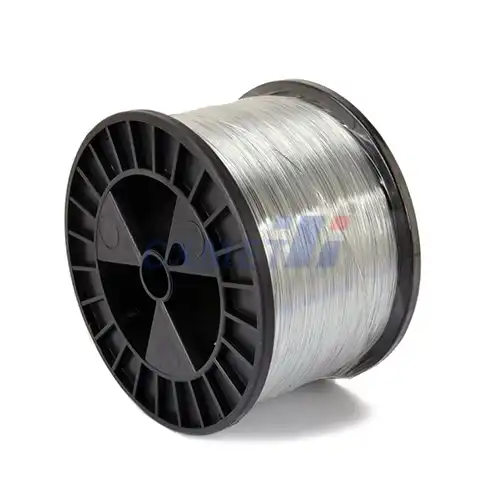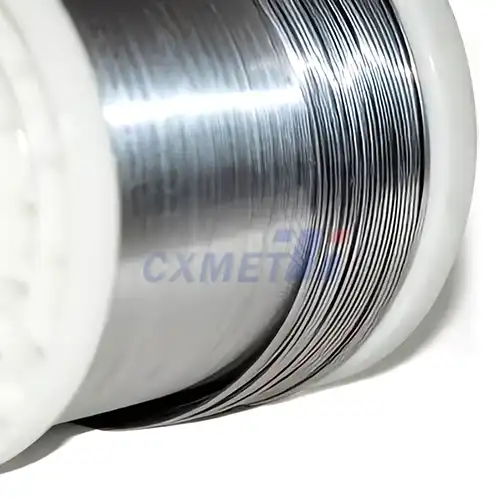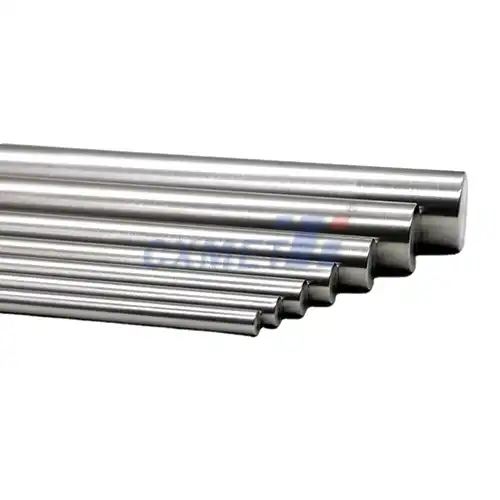- English
- French
- German
- Portuguese
- Spanish
- Russian
- Japanese
- Korean
- Arabic
- Greek
- German
- Turkish
- Italian
- Danish
- Romanian
- Indonesian
- Czech
- Afrikaans
- Swedish
- Polish
- Basque
- Catalan
- Esperanto
- Hindi
- Lao
- Albanian
- Amharic
- Armenian
- Azerbaijani
- Belarusian
- Bengali
- Bosnian
- Bulgarian
- Cebuano
- Chichewa
- Corsican
- Croatian
- Dutch
- Estonian
- Filipino
- Finnish
- Frisian
- Galician
- Georgian
- Gujarati
- Haitian
- Hausa
- Hawaiian
- Hebrew
- Hmong
- Hungarian
- Icelandic
- Igbo
- Javanese
- Kannada
- Kazakh
- Khmer
- Kurdish
- Kyrgyz
- Latin
- Latvian
- Lithuanian
- Luxembou..
- Macedonian
- Malagasy
- Malay
- Malayalam
- Maltese
- Maori
- Marathi
- Mongolian
- Burmese
- Nepali
- Norwegian
- Pashto
- Persian
- Punjabi
- Serbian
- Sesotho
- Sinhala
- Slovak
- Slovenian
- Somali
- Samoan
- Scots Gaelic
- Shona
- Sindhi
- Sundanese
- Swahili
- Tajik
- Tamil
- Telugu
- Thai
- Ukrainian
- Urdu
- Uzbek
- Vietnamese
- Welsh
- Xhosa
- Yiddish
- Yoruba
- Zulu
Is Zirconium Crucible Corrosion-Resistant?
2024-12-25 15:02:27
Zirconium crucibles have gained significant attention in various industries due to their exceptional properties, particularly their corrosion resistance. These crucibles are widely used in high-temperature applications, especially in the field of materials science and metallurgy. The question of whether zirconium crucibles are truly corrosion-resistant is of paramount importance to researchers and industrial professionals alike. In this blog post, we will explore the corrosion resistance of zirconium crucibles, their applications, and factors that influence their performance.
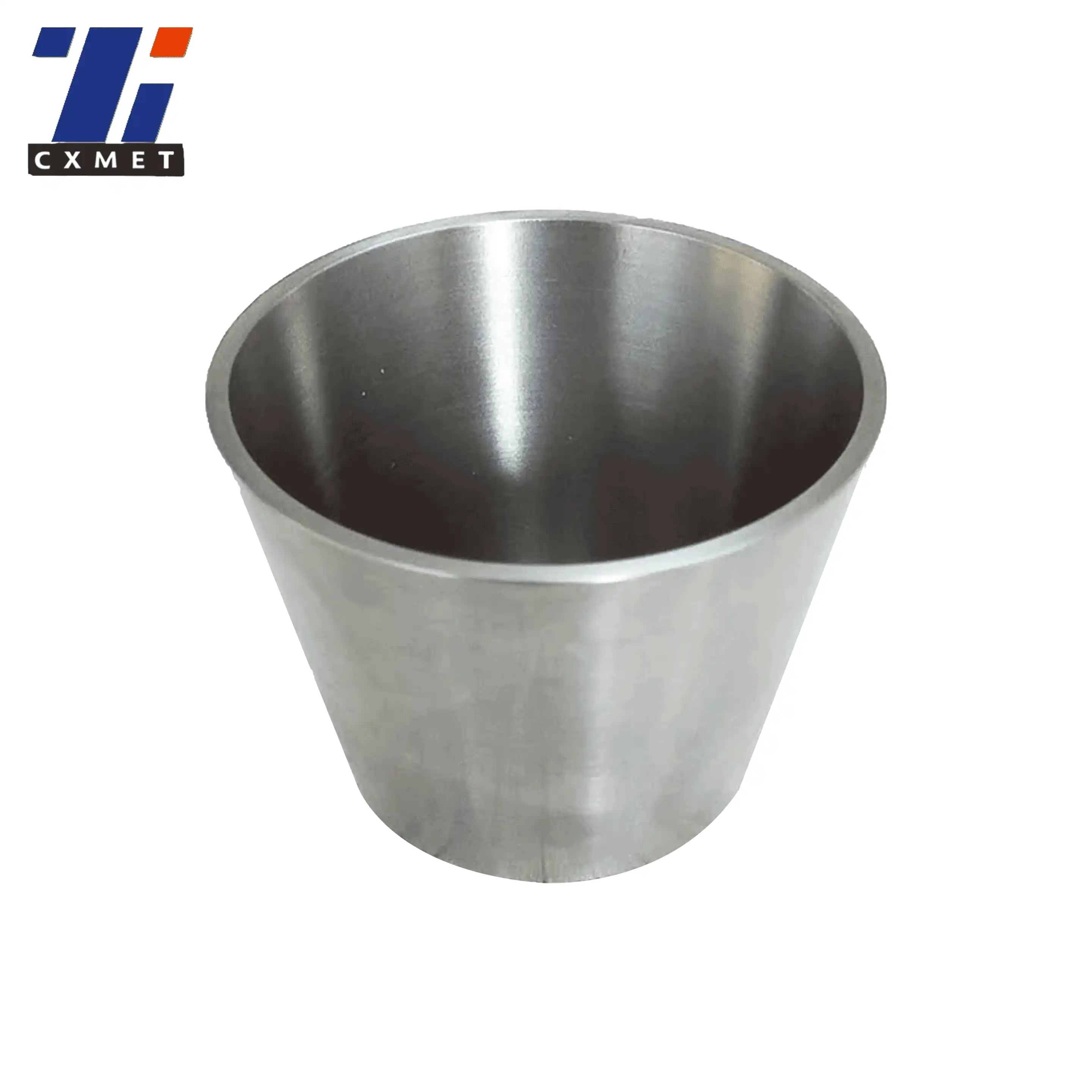
What are the advantages of using zirconium crucibles?
Zirconium crucibles offer numerous advantages that make them an attractive choice for various high-temperature applications. One of the primary benefits is their exceptional corrosion resistance, which allows them to withstand harsh chemical environments and elevated temperatures. This property is particularly valuable in industries such as metallurgy, glass manufacturing, and chemical processing.
The high melting point of zirconium (1855°C) contributes to the crucibles' ability to maintain their structural integrity at extreme temperatures. This characteristic makes them suitable for applications involving molten metals, glasses, and other high-temperature materials. Additionally, zirconium crucibles exhibit excellent thermal shock resistance, enabling them to withstand rapid temperature changes without cracking or degradation.
Another significant advantage of zirconium crucibles is their low reactivity with most molten metals and alloys. This property ensures minimal contamination of the materials being processed, making zirconium crucibles ideal for applications requiring high purity, such as in the semiconductor industry and advanced materials research.
Zirconium crucibles also demonstrate good thermal conductivity, allowing for efficient heat transfer during melting and processing operations. This property contributes to energy efficiency and helps maintain uniform temperature distribution within the crucible, which is crucial for many industrial processes.
Furthermore, zirconium crucibles exhibit excellent chemical inertness, resisting attack from a wide range of corrosive substances, including acids, alkalis, and molten salts. This characteristic extends the lifespan of the crucibles and reduces the need for frequent replacements, ultimately leading to cost savings for industrial users.
How does the corrosion resistance of zirconium crucibles compare to other materials?
When comparing the corrosion resistance of zirconium crucibles to other materials commonly used in high-temperature applications, zirconium often stands out as a superior choice. Traditional crucible materials such as graphite, alumina, and platinum each have their strengths, but zirconium offers a unique combination of properties that make it particularly well-suited for corrosive environments.
Graphite crucibles, while widely used due to their low cost and good thermal conductivity, are susceptible to oxidation at high temperatures and can react with certain metals. In contrast, zirconium crucibles maintain their integrity in oxidizing atmospheres and remain inert to most molten metals, providing a significant advantage in terms of longevity and material purity.
Alumina crucibles are known for their high-temperature stability and resistance to many chemicals. However, they can be prone to thermal shock and may react with certain metal oxides at elevated temperatures. Zirconium crucibles, on the other hand, offer superior thermal shock resistance and remain stable in the presence of most metal oxides, making them a more versatile choice for a broader range of applications.
Platinum crucibles are renowned for their excellent corrosion resistance and high-temperature stability. However, their high cost and potential for alloying with certain metals limit their use in many industrial applications. Zirconium crucibles provide a more cost-effective alternative while still offering comparable corrosion resistance in many environments.
One of the key factors contributing to the superior corrosion resistance of zirconium crucibles is the formation of a stable oxide layer on the surface when exposed to oxygen at high temperatures. This zirconia (ZrO2) layer acts as a protective barrier, further enhancing the crucible's resistance to chemical attack and oxidation.
It's important to note that while zirconium crucibles exhibit excellent corrosion resistance in many environments, they may still be susceptible to attack by certain substances, such as hydrofluoric acid or fluoride-containing compounds. Therefore, it's crucial to carefully consider the specific application and chemical environment when selecting crucible materials.
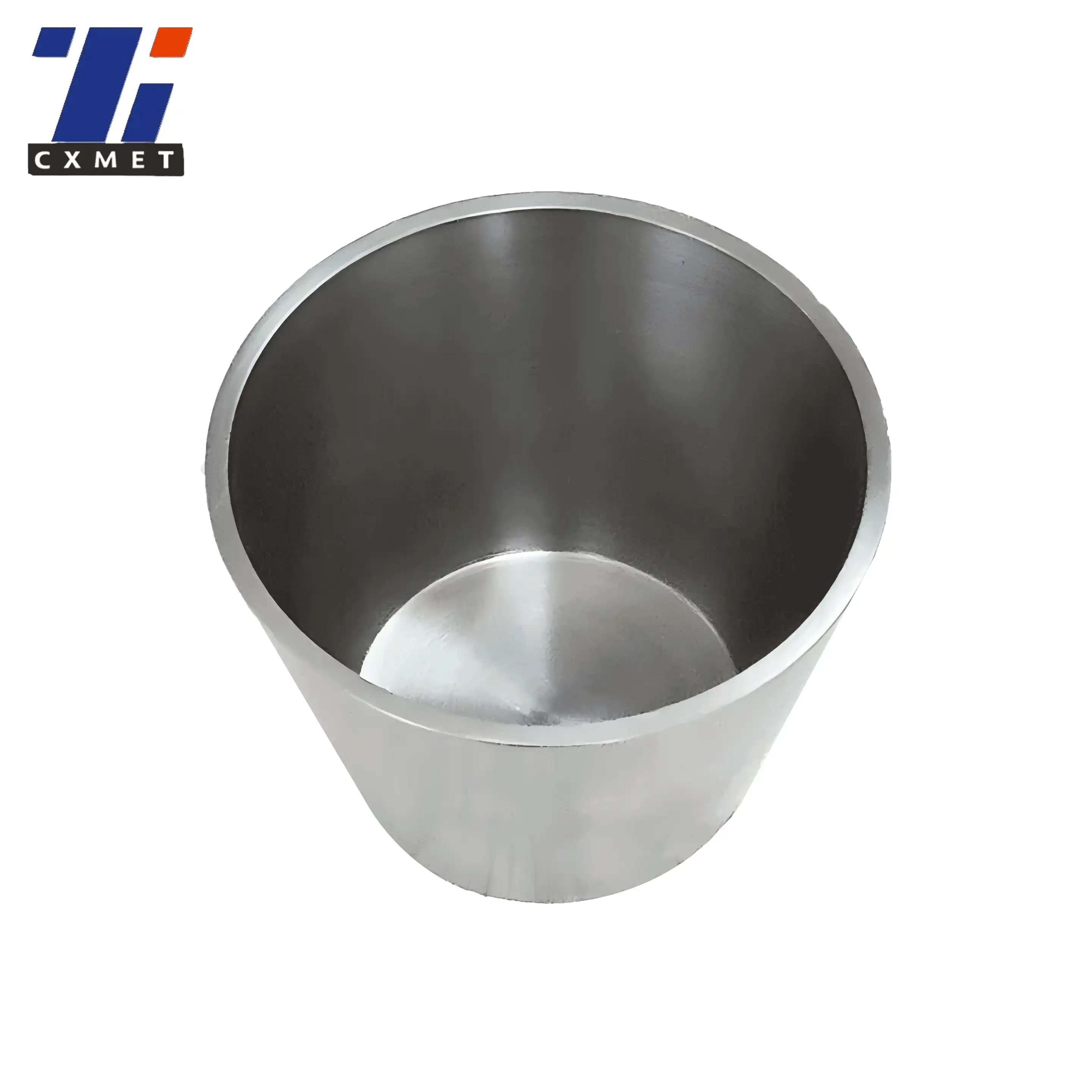
What factors affect the performance of zirconium crucibles in corrosive environments?
Several factors can influence the performance of zirconium crucibles in corrosive environments, and understanding these factors is crucial for optimizing their use and extending their lifespan. The following are key considerations that affect the corrosion resistance and overall performance of zirconium crucibles:
1. Temperature: The operating temperature has a significant impact on the corrosion resistance of zirconium crucibles. While they can withstand high temperatures, extreme conditions may accelerate corrosion rates or lead to changes in the material's properties. It's essential to operate within the recommended temperature range for optimal performance.
2. Chemical composition of the corrosive medium: The specific chemicals present in the corrosive environment play a crucial role in determining the crucible's resistance. While zirconium is resistant to many substances, certain compounds, particularly those containing fluorine, can be highly corrosive to zirconium.
3. Purity of the zirconium: The purity of the zirconium used in manufacturing the crucible can affect its corrosion resistance. Higher purity zirconium generally offers better resistance to corrosion, as impurities can sometimes act as initiation sites for corrosive attacks.
4. Surface condition: The surface finish and condition of the zirconium crucible can influence its corrosion resistance. A smooth, defect-free surface is generally more resistant to corrosion than a rough or damaged surface.
5. Presence of stress: Mechanical stress, whether residual from manufacturing or applied during use, can accelerate corrosion processes. Stress corrosion cracking is a particular concern in certain environments.
6. Oxygen content: The presence of oxygen in the operating environment can lead to the formation of a protective oxide layer on the zirconium surface, enhancing its corrosion resistance. However, excessive oxidation at high temperatures can lead to degradation of the crucible.
7. Cycling conditions: Thermal cycling and frequent exposure to different chemical environments can impact the long-term performance of zirconium crucibles. Repeated thermal shocks or alternating between different corrosive media may accelerate degradation.
8. Alloying elements: In some cases, zirconium alloys are used instead of pure zirconium to enhance specific properties. The choice of alloying elements can significantly affect the crucible's corrosion resistance in different environments.
9. Duration of exposure: The length of time a zirconium crucible is exposed to a corrosive environment can impact its performance. Extended exposure may lead to cumulative effects that are not apparent in short-term tests.
10. Presence of contaminants: Impurities or contaminants in the materials being processed can sometimes react with the crucible surface, potentially initiating or accelerating corrosion processes.
To maximize the performance and longevity of zirconium crucibles in corrosive environments, it's crucial to carefully consider these factors and implement appropriate measures. This may include selecting the right grade of zirconium for the specific application, maintaining optimal operating conditions, and implementing regular inspection and maintenance protocols.
Conclusion
In conclusion, zirconium crucibles are indeed highly corrosion-resistant and offer exceptional performance in many high-temperature and chemically aggressive environments. Their unique combination of properties, including excellent corrosion resistance, high-temperature stability, and chemical inertness, makes them a valuable tool in various industrial and research applications. However, it's important to recognize that their performance can be influenced by various factors, and careful consideration of the specific operating conditions is necessary to ensure optimal results. By understanding the advantages of zirconium crucibles and the factors affecting their performance, users can make informed decisions and maximize the benefits of these versatile materials in their respective fields.
At SHAANXI CXMET TECHNOLOGY CO., LTD, we take pride in our extensive product range, which caters to diverse customer needs. Our company is equipped with outstanding production and processing capabilities, ensuring the high quality and precision of our products. We are committed to innovation and continuously strive to develop new products, keeping us at the forefront of our industry. With leading technological development capabilities, we are able to adapt and evolve in a rapidly changing market. Furthermore, we offer customized solutions to meet the specific requirements of our clients. If you are interested in our products or wish to learn more about the intricate details of our offerings, please do not hesitate to contact us at sales@cxmet.com. Our team is always ready to assist you.
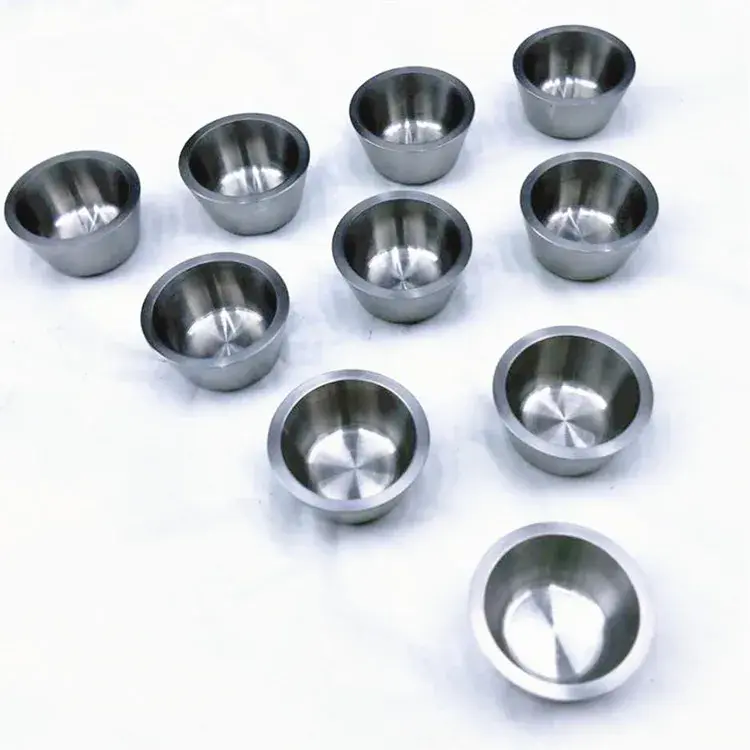
References
- Chevalier, J., Gremillard, L., Virkar, A. V., & Clarke, D. R. (2009). The tetragonal‐monoclinic transformation in zirconia: lessons learned and future trends. Journal of the American Ceramic Society, 92(9), 1901-1920.
- Kisi, E. H., & Howard, C. J. (1998). Crystal structures of zirconia phases and their inter-relation. Key Engineering Materials, 153, 1-36.
- Puchinger, W., Loidl, S., Peterlik, H., & Kromp, K. (2005). Determination of the crack resistance curve of zirconia ceramics by stable crack growth experiments. Journal of the European Ceramic Society, 25(11), 1743-1749.
- Lawson, S. (1995). Environmental degradation of zirconia ceramics. Journal of the European Ceramic Society, 15(6), 485-502.
- Piconi, C., & Maccauro, G. (1999). Zirconia as a ceramic biomaterial. Biomaterials, 20(1), 1-25.
- Hayashi, H., Saitou, T., Maruyama, N., Inaba, H., Kawamura, K., & Mori, M. (2005). Thermal expansion coefficient of yttria stabilized zirconia for various yttria contents. Solid State Ionics, 176(5-6), 613-619.
- Hannink, R. H., Kelly, P. M., & Muddle, B. C. (2000). Transformation toughening in zirconia‐containing ceramics. Journal of the American Ceramic Society, 83(3), 461-487.
- Deville, S., Chevalier, J., & Gremillard, L. (2006). Influence of surface finish and residual stresses on the ageing sensitivity of biomedical grade zirconia. Biomaterials, 27(10), 2186-2192.
- Stawarczyk, B., Özcan, M., Hallmann, L., Ender, A., Mehl, A., & Hämmerlet, C. H. F. (2013). The effect of zirconia sintering temperature on flexural strength, grain size, and contrast ratio. Clinical Oral Investigations, 17(1), 269-274.
- Nettleship, I., & Stevens, R. (1987). Tetragonal zirconia polycrystal (TZP)—A review. International Journal of High Technology Ceramics, 3(1), 1-32.
